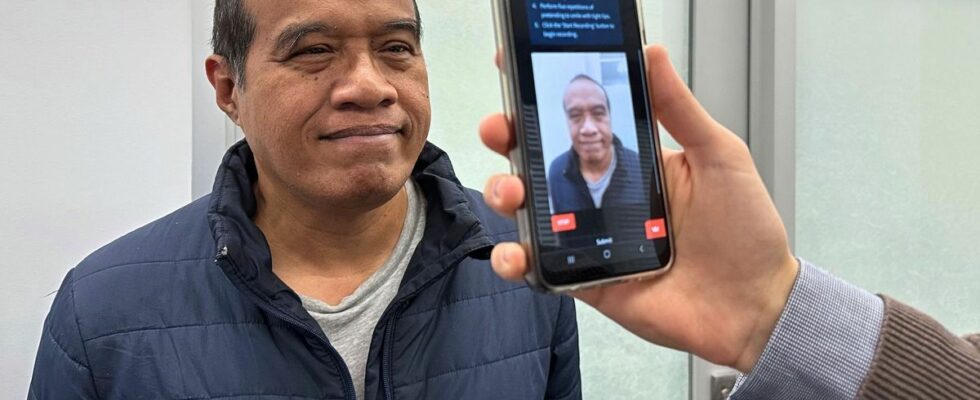Published on
Updated
Reading 3 min.
Brazilian researchers have developed a facial screening tool for strokes. Available on smartphones, it could identify strokes in a few seconds with an accuracy of 82%. Progress when we know that every minute counts.
The leading cause of acquired disability and the 2nd leading cause of death, strokes occur when blood supply to part of the brain is interrupted or reduced, preventing brain tissue from obtaining oxygen and nutrients. A delay of just a few minutes in diagnosis and treatment can result in permanent damage to brain cells.
Strokes can be difficult to spot
Symptoms of a stroke include confusion, partial or complete loss of control of movements on one side, trouble speaking, and decreased facial expressions. But beyond these general indications, some of these strokes are missed according to Professor Dinesh Kumar of the University of Sao Paulo. “Often the signs are very subtle. Additionally, if first responders work with people who don’t match their race or gender – including women and people of color – it’s more likely that the signs will go undetected. This rate may be even higher in smaller regional centers“.
Even if the health situation in Brazil cannot be extrapolated to all countries, it is undeniable that early detection of a stroke is essential, since prompt treatment can significantly improve recovery outcomes, reduce the risk of long-term disability and save lives.
And it is with this in mind that the team of Dinesh Kumar and Dr Guilherme Camargo de Oliveira developed “a simple smartphone tool that paramedics can use to instantly determine if a patient is post-stroke, then notify the hospital before the ambulance leaves the patient’s home“.
An AI embedded in a smartphone is 82% accurate
New technology based on Artificial Intelligence uses the power of facial expression recognition to detect strokes by analyzing facial symmetry and specific muscle movements, called action units.
The facial action coding system (FACS), initially developed in the 1970s, categorizes facial movements based on the contraction or relaxation of facial muscles. It is the main tool for describing facial expressions.
“One of the key parameters that affects people with stroke is that their facial muscles usually become unilateral, so that one side of the face behaves differently from the other. We have the AI tools and image processing tools that can detect if there is a change in smile asymmetry – this is the key to detection in our case” specifies Dr. de Oliveira. Video recordings of examinations of the facial expressions of 14 people who had suffered a stroke and 11 healthy controls were used in this study.
Tested in a pilot study, the tool is said to have an accuracy rate of 82% in detecting strokes. Its goal is not to replace comprehensive clinical diagnostic testing for stroke, but it could help identify people in need of treatment much earlier. “Our face screening tool has a success rate for detecting stroke that compares favorably to paramedics“, said Prof. Kumar.
The team plans to develop the smartphone tool into an app in collaboration with healthcare providers so it can detect other neurological conditions affecting facial expressions. “We want to be as sensitive and precise as possible. We are now working on an AI tool with additional data and in which we will also take other diseases into account“, said Prof. Kumar.
Other teams are working on similar tools, including an American-Bulgarian team that we told you about.
React quickly in the event of a stroke
Preventing emergency services in the event of such an emergency is essential. Dr. Gérald Kierzek, emergency physician, reminds us of the signs that should alert you:
“Remember that if you are faced with a person who is having a stroke, the acronym to remember is FAST :
- Face, for paralysis which affects the face, sometimes simply the mouth;
- A for Arm or bras in English, because weakness of the arm is a sign of stroke;
- S for Speech in English, due to the speech disorders that can also occur during a stroke;
- And finally T for Time: you must act quickly, even if these signs do not accumulate, they are temporary and return to normal after a certain time“.
